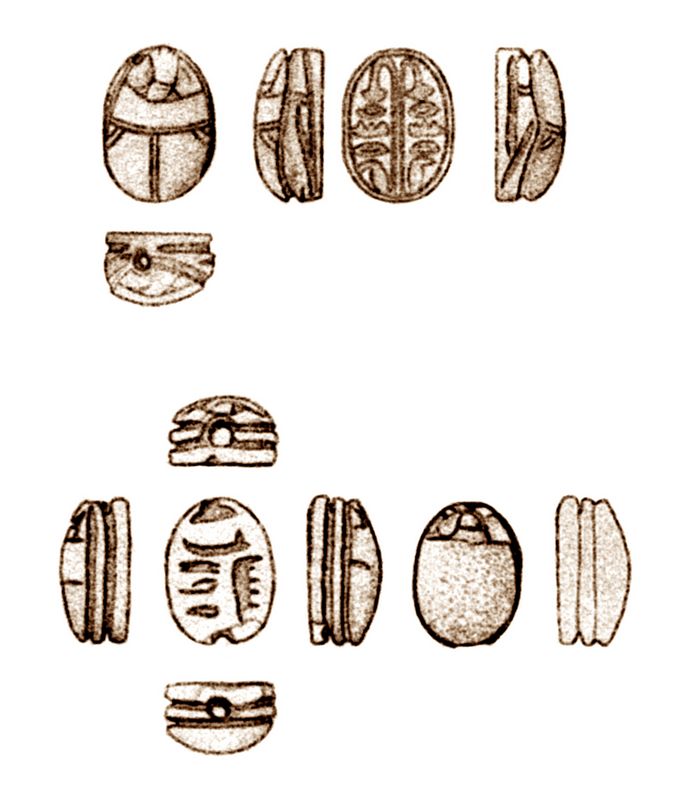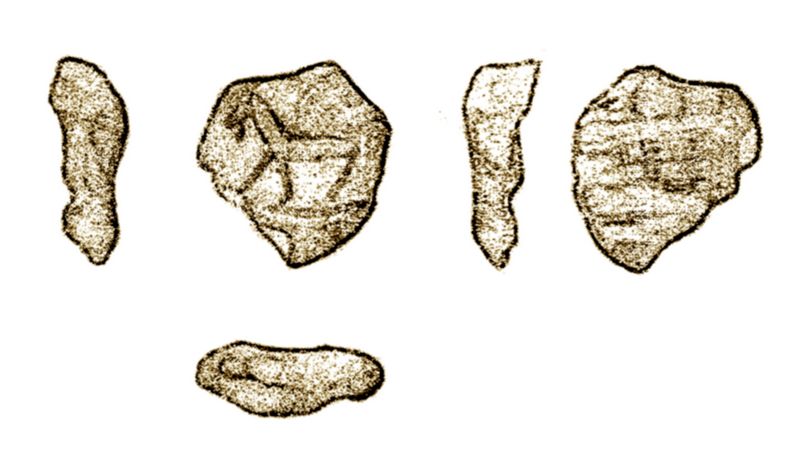Rust Family Foundation: Archaeology Grants Program
Temple
Mount Sifting Project
[RFF-2016-16]
Gabrial Barkay, Ph.D., and Zachi Dvira, Ph.D. (Co-founders and Directors), Bar-Ilan University Archaeology Institute
[RFF-2016-16]
Gabrial Barkay, Ph.D., and Zachi Dvira, Ph.D. (Co-founders and Directors), Bar-Ilan University Archaeology Institute
Importance of the
Site/Project
The Temple Mount is at the heart of many controversies over Jerusalem and Israel, yet no excavation has ever taken place there. The Temple Mount Sifting Project (TMSP) has, since 2004, been retrieving, identifying, classifying and studying thousands of ancient archaeological artifacts from the excavation debris illicitly removed from the Temple Mount. This research is uncovering the archaeological and indisputable past of the Temple Mount, and helping us understand who was there and why. What were people doing on the Temple Mount? What was there before Al-Aqsa and the Muslim/Crusader buildings we see today?
TMSP is providing archaeological evidence for the disputed past of the Temple Mount and has even overturned some long-held beliefs. For example, some scholars have doubted that the Temple Mount was annexed to Jerusalem during the 10th century BCE, and suggest that Jerusalem was a small village rather than a capital city. This research, and the number and type of 10th century artifacts that have been found, contradict this minimalist assertion. This research also supports the Biblical account and the idea that there was administrative and religious activity conducted on the Temple Mount as a part of the larger city of Jerusalem. Furthermore, there is very little written about the Byzantine period on the Temple Mount and most scholars believed that the Temple Mount was devoid of structures, or a garbage dump, during that time. However, this project has uncovered a large number of paving stones, chancel screens, coins, and other artifacts from the Byzantine period that point to the fact that there must have been some sort of administrative building or church on the Temple Mount during that period that was destroyed and replaced in later periods.
Previous Work at the Site/region

In 2004, archaeologists Dr. Gabriel Barkay and Zachi Dvira, under the auspices of Bar-Ilan University, established the Temple Mount Sifting Project (TMSP) at the Zurim Valley National Park on the western slopes of Mt. Scopus, in order to retrieve as many ancient artifacts as possible from the thousands of tons of debris which were illicitly removed by Muslim authorities from the southeastern area of the Temple Mount in Jerusalem.
[Fig.1: Temple Mount Location]
In November 1999 heavy machinery was used to create an entrance to a newly established mosque which was situated within the ancient subterranean ďSolomonís StablesĒ structure. This structure was last used by the Crusader Knights Templar as stables for their horses (and hence the name). The soil which was removed had blocked the northern opening to Solomonís Stables, and was an accumulation of debris from various renovation and construction activities that took place at the Temple Mount over the last millennia.
Since no systematic archaeological excavation has ever taken place on the Temple Mount, the finds discovered over the past eleven years within the framework of the TMSP represent the first ever archaeological data originating from Temple Mount soil. The tremendous sifting task was made possible by the participation of over 170,000 volunteers from all over the world. The artifacts retrieved in the Sifting Project provide valuable and previously inaccessible information. Even though the artifacts have been extracted from their archaeological context, most of them can be identified and dated by comparing them with those found at other sites. Furthermore, new sifting methodologies have been developed for retrieving the finds, as well as advanced quantitative analytical methods for understanding the significance of the distribution of the finds.
2016 Project
2016 Goals and Methodology:
The 2016 project is a continuation of the intensive process begun in 2011 of research and analysis of the thousands of finds toward final publication, an enormous task that requires the expertise of many scholars. Each category of finds goes through the process of sorting, identification, dating and searching for parallels, measuring, drawing and photography and then entered into a large database of all the projectís finds. There is also Carbon 14 dating of samples from finds with organic residue and unique bones, mineralogical analysis of special finds, geological analysis of the soil composition, cleaning and preservation of metal artifacts, 3D scanning of some artifacts (for the purpose of in-depth mathematical analysis), and many other unique processes. This database will eventually be studied with advanced
 data mining techniques (using SAS software).
data mining techniques (using SAS software). The goal of this analysis is to match types of finds from different categories that are distributed in a similar way across the different dump sections. This matching provides information about the findsí original contexts. Finally, for comparative purposes soil was sampled from sites on the slopes of Jerusalemís old city and sifted in order to create statistical control groups to compare to the Temple Mount finds. The samples from these sites contained small and mixed finds from various periods as in the case of the soil from the Temple Mount. Once the quantitative analysis process will be completed, the various researchers will be able to write their final discussions and conclusions for the sifting projectís final report. The ultimate goal is to have the study of major artifacts completed for publication of the first volumes beginning in 2018.
[Fig.2: Egyptian scarabs from Temple Mount]
2016 Results:
All areas of research of the TMSP advanced in the 2016 season with a special focus on completing the study of pottery, coins, glass, figurines, and special finds. One of the major discoveries from 2016 is the reconstruction of opus sectile floor patterns from the Herodian and Crusader periods. This past year, research confirmed the existence of a unique opus sectile pavement in the Temple Mount that we think might have been the largest of its kind in the Roman world. Opus sectile specialist, Frankie Snyder, used geometry and common Herodian patterns in order to recreate the patterns in the courtyard of the Second Temple. This research was published in the Biblical Archaeology Review in November 2016 and will be published in depth in the planned publication of the project.
 The
study of Iron Age figurines
was also completed with the discovery of a unique distribution from the
sifting project that includes the absence of foreign figurines and a
high percentage of bird/pinched nose head fragments. Another
interesting assemblage from the sifting project is a number of unique
Iron Age II pottery vessels that are of a type not common in other
excavations in Jerusalem. This research has not yet been completed, but
early analysis points to a meaningful reason behind this assemblage.
The
study of Iron Age figurines
was also completed with the discovery of a unique distribution from the
sifting project that includes the absence of foreign figurines and a
high percentage of bird/pinched nose head fragments. Another
interesting assemblage from the sifting project is a number of unique
Iron Age II pottery vessels that are of a type not common in other
excavations in Jerusalem. This research has not yet been completed, but
early analysis points to a meaningful reason behind this assemblage. [Fig.3: Iron Age seal impressions from Temple Mount]
A final discovery this year, based on the distribution of finds as well as the types of artifacts found, was the existence of some kind of destruction layer that dates to the very early days of the Islamic period. It is most probable that this destruction dates to the earthquake that shook the Temple Mount in 658CE.
The Rust Family Foundation funded the drawing of special finds from the Temple Mount Sifting Project in 2016. Two artists were on staff for a total of 820 hours to draw special finds and special pottery this past year. This resulted in the drawing of 31 special pottery vessels, 62 special items including 41 terracotta figurines and 15 seals and seal impressions, as well as 890 important drawings of pottery from the Iron Age II that are rare in Jerusalem. Each artifact requires several drawings from different points of view. The accuracy necessary for these drawings is very time consuming and requires several proofs before each drawing is completed. The accurate drawing of all these finds is necessary for final publication.
.
Recent Foundation grants: general Archaeology Grants Program w/map
Copyright © 2018 Rust Family Foundation